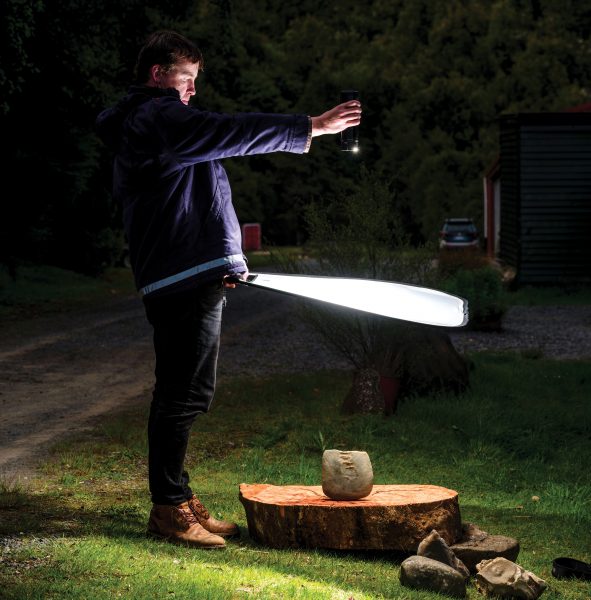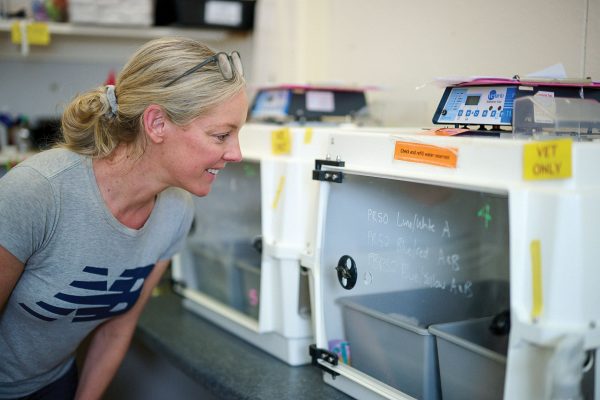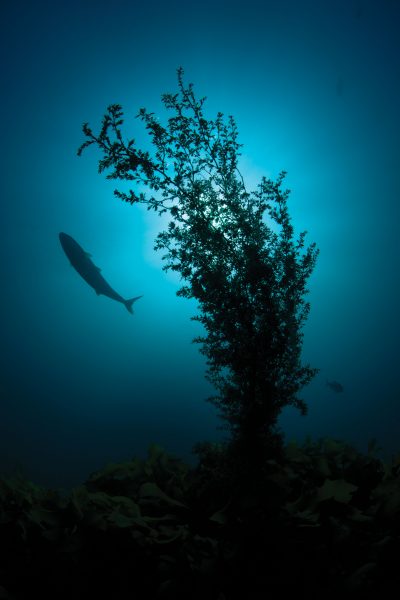Salute
Peter Quinn, who has previously photographed whitebait (Issue 17), West Coast coal (Issue 26) and Highway 35 (Issue 28), was moved to photograph the North Island main trunk rail story on account of his grandfather.
“He left the merchant navy between the wars and settled in Frankton, where he worked as a guard on the railways for most of the rest of his life,” says Peter. “He died when I was about eleven, but I still remember climbing over the back fence of his railway cottage in Te Rapa to play in carriages that were lined up on the rails there. I wanted to find out a bit more about what he had been involved in, what railways were like. In fact, at Frankton I discovered that some of the old timers still remembered him, and they were helpful in getting me cab passes and other favours.”
Peter spent eight months photographing along the Main Trunk, but says that he spent far more time waiting for trains than he did actually taking pictures of them. “I would set myself up in a location with a good background and wait for a train to arrive. One would be scheduled for four or five P.,1. when the light was good, but not appear until six o’clock, by which time it was too dark. I’d have no option but to wait another 24 hours and hope the next day’s train was on time.
“I camped for three days near Mangaweka in searing 38° temperatures, while at the other extreme I spent days in sub-zero temperatures near Waiouru, trying to get worthwhile shots in the snow.”
The highlight?
“Riding in the cab of a steam locomotive for three hours. They really feel alive. Even when they’re stationary at the platform they are like a horse champing at the bit. Puffing through the suburbs of Auckland, it was amazing to see all the cars stopping, the people rushing to watch the steam train. I caught a glimpse of the power and romance of steam.”
“As a kid in England, I kept everything that moved: mice, hedgehogs, snakes, squirrels, and it was only later that I developed an interest in birds,” says Geoff Moon, renowned bird photographer, author of several books on New Zealand birds, and author and photographer of our kingfisher story.
After studying veterinary science at London Veterinary College, he emigrated to Warkworth in 1948. “At that time the New Zealand Government Veterinary Services Council decided that the country needed a full veterinary service, and recruited a lot of young British vets. One or two of my friends came out ahead of me and sent back favourable reports. I looked at a map and chose Warkworth as a destination based on its general location—rural, near the sea, and not too far from Auckland. People who chose more isolated spots like Eketahuna often ended up with unhappy wives, and returned to Britain at the end of their initial two-year contracts.
“I stayed as a vet in Warkworth for 30 years. My territory ran from east coast to west, Dome Valley to Orewa, and at the time I serviced 460 dairy farms. Now there are not more than 40 in the area. I soon got an assistant, and we were pretty busy, especially in spring. Farmers rise early, so I’d get my first calls at five A.m., and sometimes it seemed as if the day’s work didn’t finish until six a.m. the next day. I drove 80,000 miles a year, all on gravel roads. I tell you, most rural vets would make great rally drivers!
“I became particularly interested in the morepork, kingfisher and white-faced heron. Farmers could sometimes provide me with information about nest sites and where they had seen birds feeding, and when things weren’t too busy, after tea I’d gradually build up hides. One of them, to enable me to photograph a white heron’s nest, was 72 feet up a pine tree! Once the hide was finished, I’d photograph from it until, say, one in the morning, then go home and develop a few plates, and get to bed about three. Wretched farmers would start phoning again at five!
“My early photography was done on glass plates—black-and-white, of course—and they were cumbersome, fragile things. Unlike modern 35 mm film, you couldn’t carry many.
“The first electronic flash units were coining out at the time, and I was able to use those. Changing a bulb once in the hide up the pine tree, I forgot that they stored 3000 volts in a capacitor and was thrown unconscious across the hide—preferable to out of it! The farmer thought someone had taken a shot at a possum.”
After he retired from the Warkworth practice in 1982, Geoff shifted to the bush in Titirangi, close to his beloved native birds, and he remains active in photography. He has worked as a cameraman for the National Film Unit on natural history projects, indulged in some vet locum work, and still likes to stay abreast of the veterinary literature. He is a fellow or member of several photographic societies, and in 1994 was awarded an OBE for services to the veterinary profession and photography.

















